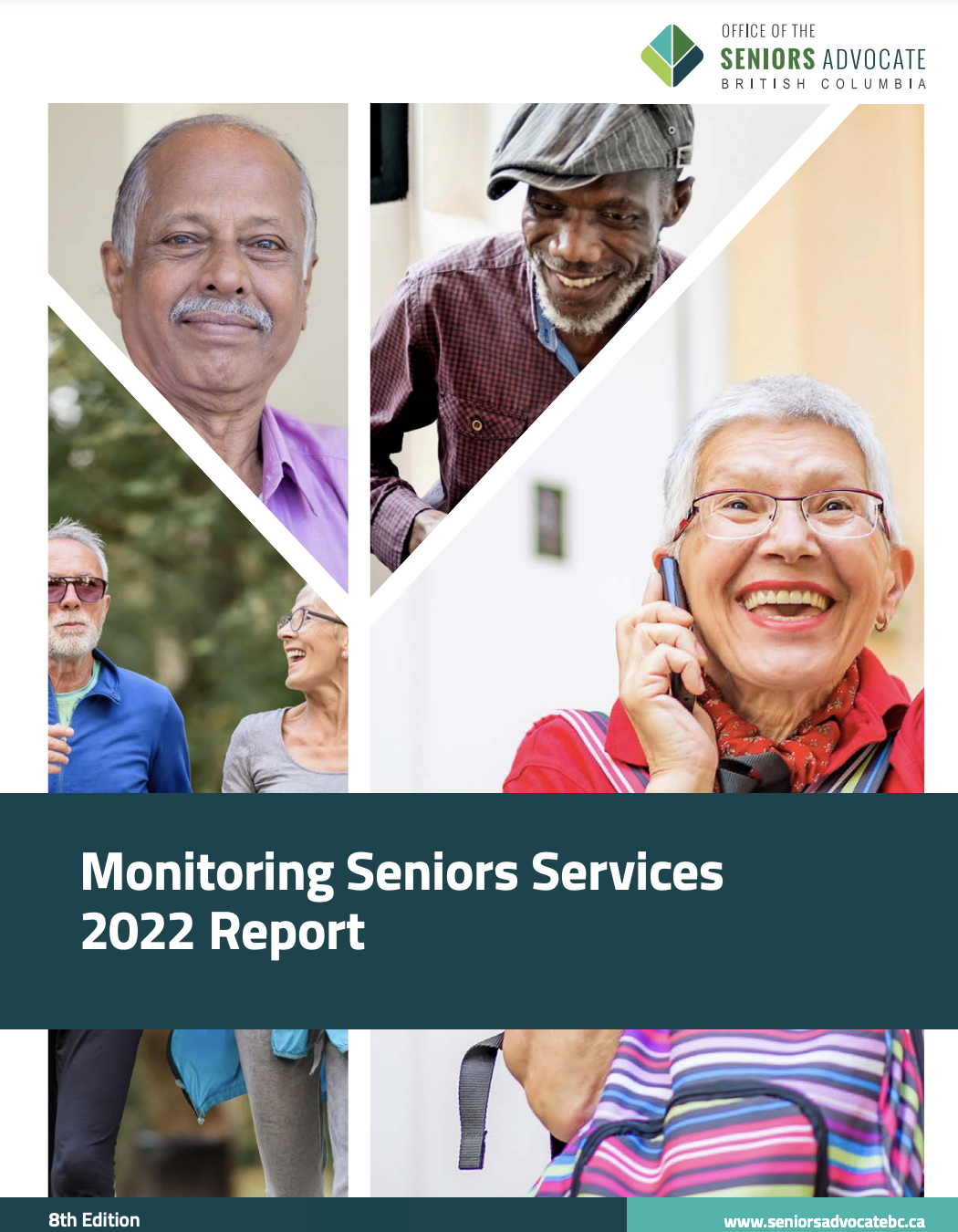A number of senior services are struggling to meet demand
VICTORIA – The newly-released 2022 Monitoring Seniors Services report shows wait times for four of the top five surgeries have fallen over the past five years and access to preferred long-term homes is continuing to improve.
However, while some services, such as HandyDART, are beginning to rebound from the initial impacts of the pandemic, the overall, five-year trends show a number of services are struggling to meet the demands of a continually-growing seniors population in BC
The report provides an annual check-up on the state of BC seniors’ services in the key areas of health care, housing, transportation, income supports, community services and safety. For the first time this year, the report includes new data on fatalities and surgical wait times.
“Overall, we are continuing to see the BC seniors population increase both in absolute numbers and as a proportion of the population,” said BC Seniors Advocate Isobel Mackenzie. “The number of seniors in our province has grown by 17 per cent in the last five years and 20 per cent of BC’s population is now over the age of 65 – a 10 per cent increase over the last five years.”
Most of the growth is ‘younger’ seniors, people aged 65-74 who represent almost 60 per cent of the seniors population in BC The number of seniors 85+, while growing in number, remained relatively stable over the past five years as a proportion of the total population.
“It is important to understand most of the seniors population in BC is relatively healthy. This tells us we have not yet begun to feel the real pressures that will come to many programs and services as the ‘baby boomers’ begin living into their 80s. We need to act now to ensure supports are there for them in the future,” continued Mackenzie.
While the report highlights the progress made in surgical wait times and access to preferred long-term care homes, it also shows the need to improve access to home support, assisted living, and long-term care; provide more relief for seniors who rent through additional subsidized housing units; increase the Shelter Aid for Elderly Renters subsidy; and a continuing increase in reports of seniors abuse and neglect.
Trends over five years:
- The main growth in the senior’s population is in the 65-74 age cohort which grew 17 per cent compared to a 10 per cent growth in people 85+. Overall, while people 65+ increased as a proportion of the population, people 85+ continue to be 2 per cent of the total population.
- The life expectancy at 65 years in British Columbia is 21.8 years; 23.3 years for females, 20.4 years for males and has remained relatively stable.
- Emergency department visits per 1,000 seniors (65+) has fallen 10 per cent and hospitalization rates have fallen 6 per cent.
- The rate of publicly-funded long term care beds per 1,000 of population age 75+ has fallen 12 per cent.
- The proportion of long-term care residents taking antipsychotic medications without a diagnosis of psychosis increased 5 per cent last year and is at its highest level in the past five years.
- 95 per cent of seniors live independently in private dwellings, while only 5 per cent of seniors live in assisted living or long-term care. A higher proportion of seniors live independently compared to five years ago.
- While the rate of home ownership among seniors has remained relatively stable at 80 per cent, the rate of seniors with a mortgage is increasing and now represents 32 per cent of senior homeowners.
- New users of the Property Tax Deferment program decreased, falling 23 per cent from last year and 50 per cent compared to 2017/18.
- The average rent for seniors using the Shelter Assistance for Elderly Renters subsidy increased 13 per cent while their rent subsidy increased by 3 per cent.
- There has been a consistent decrease in the average rent subsidy for SAFER clients over the past three years.
- The waiting list for Seniors Subsidized Housing has increased 50 per cent.
- 79 per cent (814,010) of seniors maintain an active driver’s licence, a 3 per cent increase from last year and 19 per cent compared to five years ago.
- Overall, 93 per cent of BC seniors receive Old Age Security, 29 per cent receive the Guaranteed Income Supplement (GIS), and 7 per cent receive the BC Seniors Supplement (BCSS). These percentages have remained relatively stable.
- Calls to Designated Agencies, the Seniors Abuse and Information Line and BC 211 reporting potential abuse and neglect of seniors (including self- neglect) have all increased as have reports to RCMP and Vancouver Police regarding property crime and physical harm to people age 65 and older.

